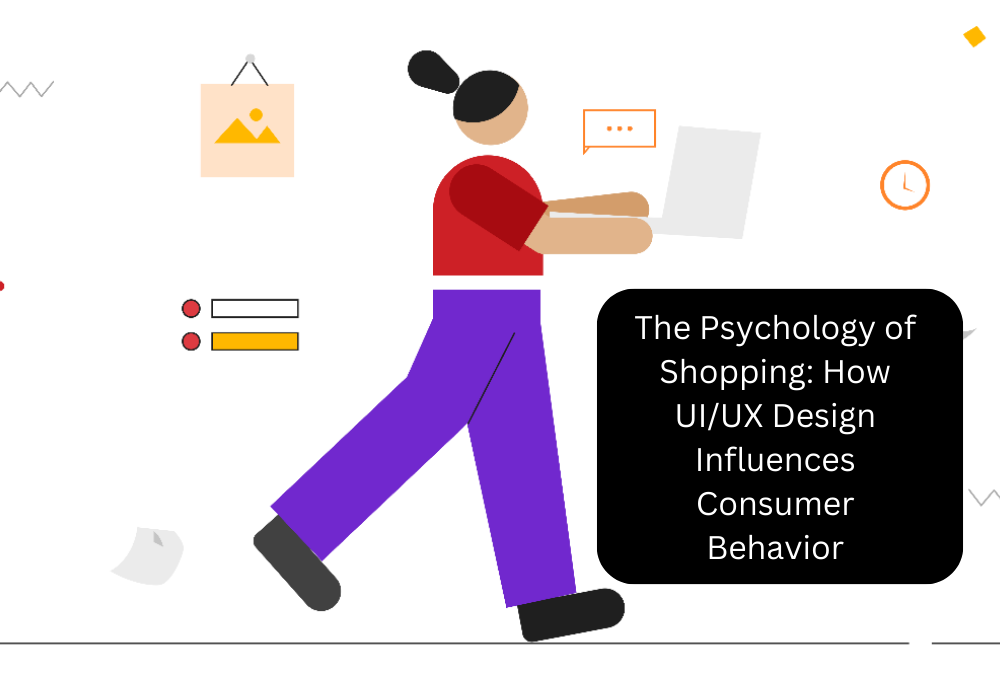In the dynamic realm of e-commerce, the user interface (UI) and user experience (UX) design of online platforms wield a profound influence on consumer behavior.
The journey from browsing to purchase is not merely a transaction; it is a psychological experience shaped by the design choices made by the developers.
In this exploration, we delve into the intricate interplay between UI/UX design and the psychology of shopping, dissecting the elements that captivate, engage, and guide consumers toward making purchasing decisions.
1. First Impressions Matter: The Power of Visual Design
The virtual storefront is the online retailer’s equivalent of a physical display window, and just as in a brick-and-mortar store, first impressions matter. A visually appealing and well-organized UI immediately captures the attention of online shoppers.
The color scheme, imagery, and layout of the website or app contribute to the overall aesthetic, setting the tone for the shopping experience.
Moreover, an intuitive and clean design enhances navigation, making it easier for users to find what they are looking for. Cluttered or confusing interfaces can lead to frustration and may drive potential customers away.
The psychology behind this is clear – a visually pleasing and user-friendly design creates a positive initial impression, fostering a sense of trust and comfort.
2. Seamless Navigation: Guiding the Shopper’s Journey
Effective UI/UX design functions as a silent guide, seamlessly leading the shopper through the digital aisles. Intuitive navigation is paramount, allowing users to effortlessly explore products and categories.
The placement of menus, search bars, and filters should be strategically designed to enhance the user’s sense of control and empowerment.
A well-thought-out navigation system not only saves time but also contributes to a sense of satisfaction. The psychology here is rooted in the principle of reducing cognitive load – the less effort a user needs to exert to find what they want, the more positive their experience will be, increasing the likelihood of a successful transaction.
3. Personalization: Creating a Tailored Shopping Experience
Understanding the individual preferences and behaviors of shoppers is a key element in the psychology of online shopping.
UI/UX design that incorporates personalization features, such as recommended products based on past purchases or browsing history, creates a sense of exclusivity and attentiveness.
The ability to customize the shopping journey through personalized accounts, wish lists, and saved preferences taps into the psychological desire for a unique and tailored experience.
When consumers feel that the platform understands their needs and preferences, they are more likely to engage and convert.
4. Visual Hierarchy and Call-to-Action: Influencing Decision-Making
The strategic placement of elements on a webpage or app greatly influences the user’s focus and decision-making process. Visual hierarchy, achieved through varying sizes, colors, and positioning, guides the user’s attention toward specific elements.
This is particularly crucial for call-to-action (CTA) buttons, such as “Add to Cart” or “Buy Now.”
The psychology behind this lies in the concept of nudging – gently guiding users towards desired actions without being overtly forceful.
A well-designed visual hierarchy encourages users to take the next step in the purchasing journey, whether it’s adding items to the cart, proceeding to checkout, or exploring related products.
Read: Finding Privacy: How Families Can Find Peace and Serenity When Living on a Busy Street
5. Trust-Building Elements: Security and Transparency
Earning the trust of online shoppers is a delicate yet essential aspect of UI/UX design. Incorporating trust-building elements, such as secure payment gateways, clear return policies, and customer reviews, reinforces the credibility of the platform.
The psychology at play here is based on the user’s need for assurance and reliability.
Visible security badges, transparent pricing, and a user-friendly interface for managing account information contribute to a sense of safety and transparency.
When consumers feel confident that their transactions are secure and that the platform is transparent about its policies, they are more likely to proceed with their purchases.
6. Mobile Responsiveness: Meeting the Shopper Where They Are
The increasing prevalence of mobile devices in our daily lives has reshaped the landscape of online shopping. UI/UX design that prioritizes mobile responsiveness ensures a consistent and enjoyable experience across various devices.
The psychology behind this is rooted in convenience and accessibility.
Consumers today expect the flexibility to shop seamlessly from their smartphones or tablets. A responsive design not only meets these expectations but also caters to the impulse-driven nature of online shopping.
The ability to browse and make purchases on the go aligns with the fast-paced lifestyles of modern consumers.
Conclusion: Designing the Shopping Experience
In the digital age, where choices abound, the psychology of shopping is intricately intertwined with the UI UX design of online platforms.
Developers and designers play a pivotal role in shaping the consumer’s journey from exploration to purchase.
By understanding the psychological factors that influence online shopping behavior, they can create interfaces that captivate, engage, and ultimately convert visitors into satisfied customers.
The evolving landscape of e-commerce demands a constant reevaluation of UI UX Design Course strategies, ensuring that UI/UX principles continue to align with the ever-changing expectations and preferences of the discerning online shopper.

